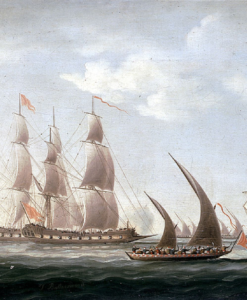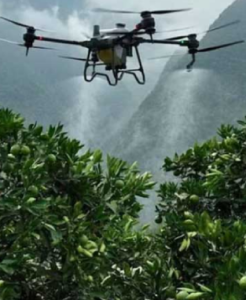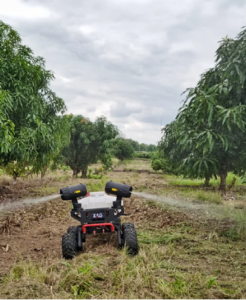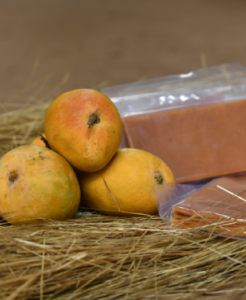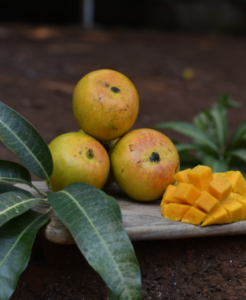Methods of Soil Management Practices at Alphonso mango orchards or other Fruit orchards
A. Clean culture
This type of cultivation is extensively followed in India. This involves regular ploughing and removal of weeds. The clean culture has many disadvantages. They are,
1. Humus will be completely depleted rapidly due to frequent cultivation.
2. Frequent cultivation causes injury to the feeding roots, the trees may be short lived or stunted in growth.
3. Clean cultivation aids in more alteration leading to the depletion of nitrogen.
4. Hard pan is created in the soil.
5. Frequent cultivation causes more soil erosion.
6. The above mentioned defects in clean cultivation can be minimized by avoiding deep and frequent cultivation and also cultivation when the soil is too wet.
B. Clean Culture with Cover Crops
This type of soil management involves raising of a cover crop or green manure after removing the weeds. If clean cultivation is attempted during the rains, considerable erosion is almost sure to occur. It is probably best to plant a green manure crop between the trees early in the rains and plough it into the soil towards the end of monsoon season. In India, green manure crops like Sunhemp, Cowpea, Daincha, Lupins etc. are more commonly used. Legume cover cropping in grape, Alphonso Mango, guava and other fruit crops is becoming a common practice in the management of orchards.
Cowpea and french beans grow well under guava and sapota tree. In some places to prevent soil erosion, certain permanent cover crops like Calapogonium muconoides, Centrosema pubescens and Peuraria phaseoloides are raised in the alley spaces. They are leguminous crops, establish in a short period, and dry up during summer to conserve moisture. With summer showers they come up again because of their profuse seeding habit and spread themselves as a vegetative mat by the time the heavy monsoon starts pouring in. Such permanent cover cropping is a common feature in rubber plantations of Kerala and Kanyakumari district.
C. Mulching
This is one of the important soil management practices adopted in certain countries. Crop residues like straw, cotton stalks, leaves, saw dust, pine needles, coir dust arid other materials like polythene films or certain special kinds of paper are spread in the tree basins and in inter spaces between trees. Main objective of mulching is to conserve soil moisture and to control the weed growth. The other advantages of mulching are,
1. Keeps soil cool in day; warm at night hours.
2. Reduces surface run-off.
3. Adds humus to the soil.
4. Prevents soil erosion.
5. Fruits are protected and kept clean since they fall on the mulches.
6. It allows the absorption of more rain water.
7. It reduces irrigation frequency.
The following are some of the disadvantages
1. Dry materials used as mulches encourage the risk of fire and consequent damage to trees.
2. Thick mulches may act as places for mice and rodents to live and multiply. They may cause damage to tree trunks and roots by eating the bark and burrowing to the land. The mulching materials should be placed too close to the tree trunk and it should be spread in such a way that they give a good cover to the root system of the trees.
D. Sod Culture
In this method, permanent cover of grass is raised in the orchard and no tillage is given. This type of orchard cultivation is followed in USA and Europe. This may be useful in slopy lands for preventing soil erosion. But they compete for soil moisture and available nitrogen. The drawbacks of this system are the need for increased manuring and water application. They are harmful to shallow rooted trees. Hence sod may be useful with deep rooted trees because soil moisture will be very low
on the top layers.
E. Sod mulch
This is similar to sod with the only difference is that the vegetation is cut frequently and the cut material is allowed to remain on the ground. This is slightly better than the previous one, as the moisture loss is not as great as in sod. In both sod and sod mulch, more nitrogen should be applied to the fruit trees than usual application because the vegetation utilises more soil nitrogen.
Intercropping
In young orchards, the question of how best one can use the soil between the trees arises trees are properly spaced there is considerable land which will not be used by the permanent tree for several years. Similarly in the case of other long duration horticultural crops like tapioca, turmeric, ginger and banana some area between adjacent plants will be remaining unoccupied by the main crop for few months. It naturally appeals to the grower to get some return from this vacant land especially when he is getting no return in the early periods. The practice of growing any economic crop in alley spaces of the fruit trees in the first few years or in the’ unoccupied spaces of the long duration crop in the early periods is referred as intercropping. They also act as a cover crop and the land benefits by the cultivation, irrigation, manuring given to the intercrops. The following important principles should be observed while growing intercrops.
1. Intercrops should not occupy the area where the roots of the fruit trees are concentrated.
2. Soil fertility should be maintained or improved when intercrops are grown.
3. Water requirements of the intercrops should not clash with those of the main fruit trees. The intercrop may require irrigation at a time when it would be detrimental to the trees.
4. Intercrops should be selected with reference to their effect on soil moisture. Grain crops remove excessive moisture to the detriment of fruit trees. The intercrops selected should not exhaust the soil water and nutrients and should not demand more water than is allowed for fruit trees.
Vegetables are the best inter crops when compared to millets. But whatever may be the intercrop grown, it should be kept well away from the main fruit trees and irrigated independently. The intercropping should be stopped when trees occupy the entire orchard space. Thereafter, green manuring or cover cropping should be only practiced.
Recommended intercrops in Horticulture crops,
Alphonso Mango- Upto 7 yrs age – Leguminous vegetables, Papaya
Grapes- Upto 8 Months – Snake gourd or bitter gourd in pandal
Apples/ pears – Upto 5 years- Potato / Cabbage
Banana- Upto 4 Months- Onion




